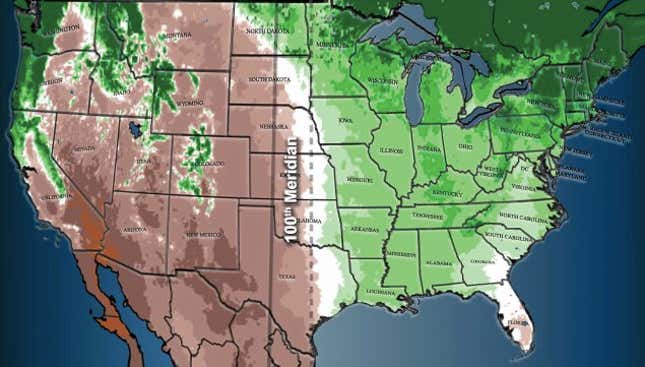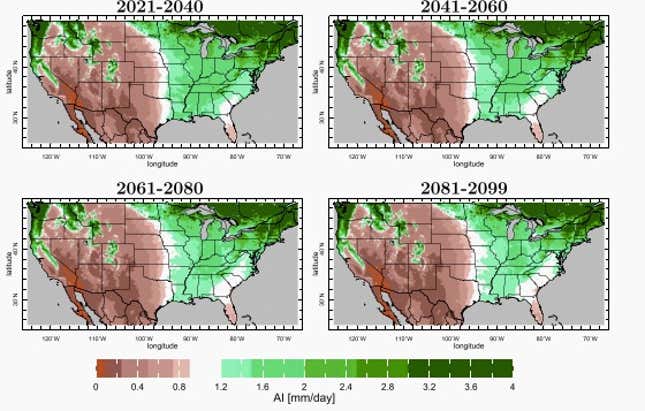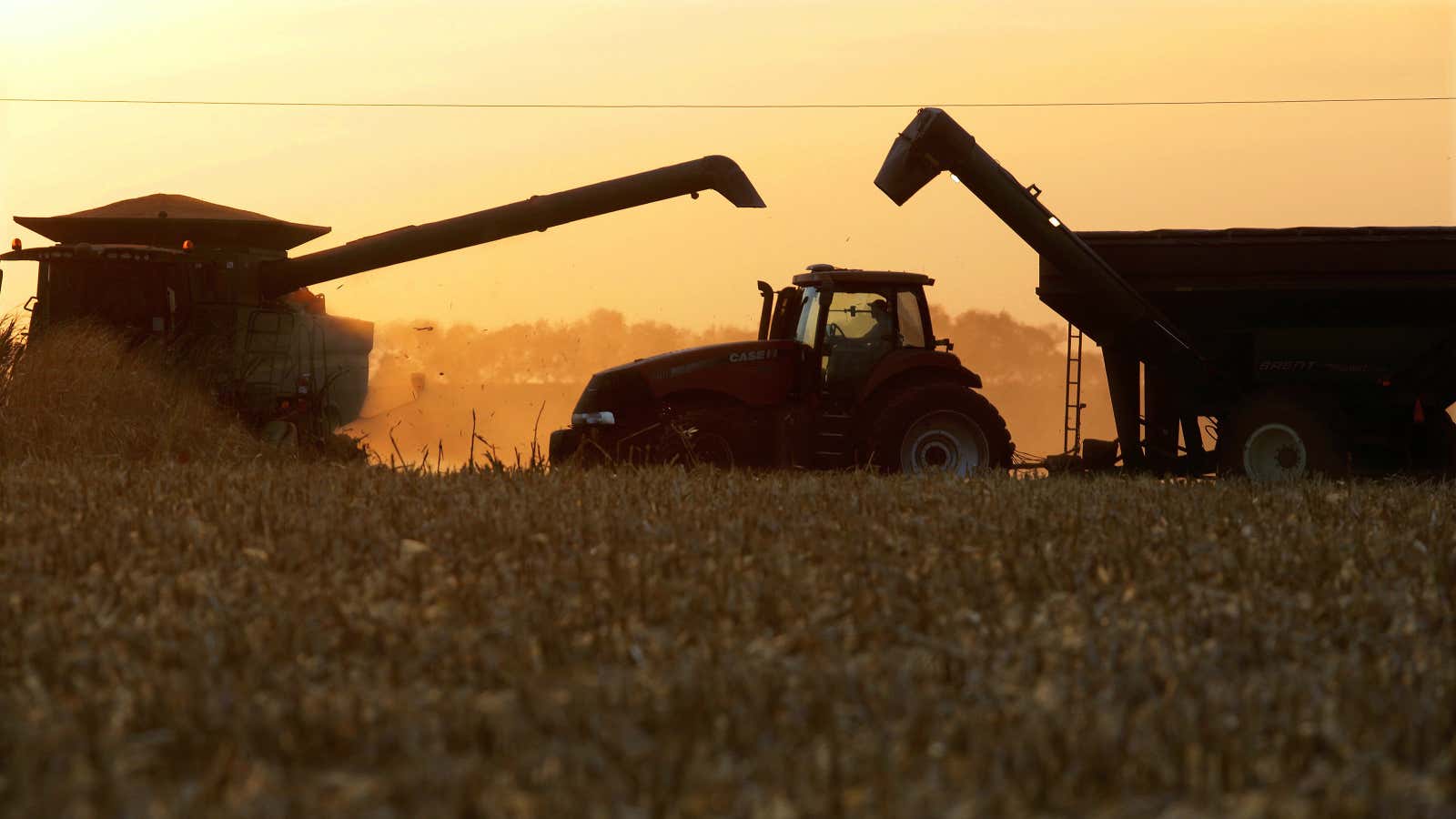There’s a line that stretches down North America, singeing into the continent a border that separates an arid west from a humid east. And it’s on the move.
Called “the 100th Meridian,” the line slices through Canada, the Dakotas, Nebraska, Kansas, Oklahoma, Texas, and eastern Mexico. It exists because the Rocky Mountain range blocks moisture that would sweep into the Great Plains from the Pacific Ocean, while storms in the Atlantic Ocean push moisture into the US midwest, bumping against more moisture that barrels north and slightly east from the Gulf of Mexico during the summer.

The 100th Meridian was first conceptualized by John Wesley Powell, a famous 1800s explorer and geologist who was the first European descendent to raft down the Colorado River. In more recent years, Columbia University professor Richard Seager and his team of researchers revisited the concept as part of their ongoing work to better understand how climate change affects geography, and by extension the people who live in areas experiencing change.
Drawing on climate models, regional vegetation data, US Department of Agriculture data, land model simulations, and weather station data, Seager was able to confirm in a recent study (pdf) that the 100th Meridian is more or less as Powell predicted. Except, as he shows in an accompanying study, by now the line has shifted eastward 140 miles (pdf).
As Seager explains it, meteorological models for a long time have predicted a decline in the precipitation coming up from the US southwest into the midwest. That will be exacerbated by rising temperatures caused by fossil fuel-generated greenhouse gases: as the atmosphere warms it can draw more moisture out of the land. The scientific term for this phenomenon is called evapotranspiration, and over time can cause arid landscapes to expand.
The 100th Meridian’s eastward march will eventually force changes to the US economy, Seager says. “There will need to be a farm economy adjustment to this because of the environmental changes,” says the researcher. “The places over the western parts of the high plains will become more arid.”

That’s good news for wheat growers and cattlemen, bad news for corn farmers and planters of several other crops, Seager explains. Some in agriculture will have to consider whether it’s economically feasible to continue their current operations by irrigating more water to their fields, or whether it makes more sense to shift to farming different crops.
It wouldn’t be the first time farmers in the US midwest would have to change their operations because of climate factors. In the 1930s, the land was speckled with many small farms until the Dust Bowl drought forced the consolidation of operations too small-scale to turn a profit.
As to whether the eastward march of the 100th Meridian can be stopped, Seager says that all depends on the role humans play. “The only way that would happen is if we start getting very serious about reducing greenhouse-gas emissions,” he says.
